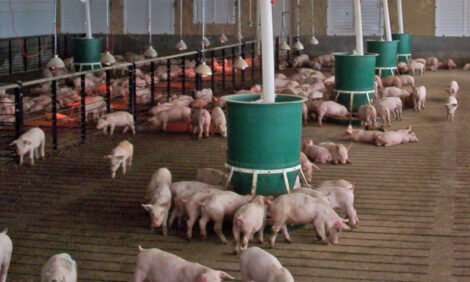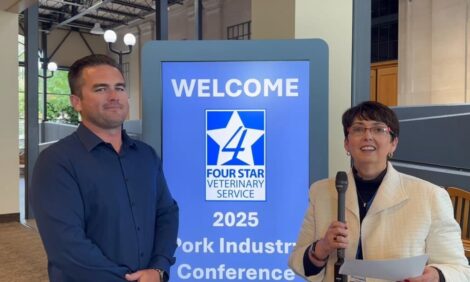



Regulatory issues - the pressure’s mounting
By Keith Wilson of the Wilson Law Office in Edmonton and published by Alberta Pork. Keith Wilson Keith Wilson |
U.S. regulations targeted directly at the pork industry are becoming increasingly hostile. Is Canada far behind?
Emerging legislation and increasing hostility towards agriculture is driving a regulatory environment that, if left unchecked, will grant the government, courts and other nonproducers more influence over the management decisions of pork producers, says a legal specialist with several years experience working with the agricultural industry.
Three key areas of increased regulation, says Keith Wilson of the Wilson Law Office in Edmonton, include the environment; worker issues such as employment standards, unionization, and health and safety; and animal health and food safety. The greatest pressure, however, comes from the environmental arena.
“The federal Clean Air Act, Alberta’s Water for Life policy, which will affect producers’ ability to access surface and groundwater, and the Province’s new Wetlands Policy will all have the potential to compromise pork producers’ ability to farm,” he says.
To compound that, some current legislation contains wording that could allow the general community to deny producers the right to farm. Wilson cites several examples of recent U.S. court cases and legislation, targeted directly at agricultural producers, which have succeeded in that objective.
“Arizona, for example, recently became the latest in a growing number of states to ban the use of gestation stalls in response to lobbying efforts, and it appears likely that more states will follow.”
Air and nuisance issues
The recently announced federal Clean Air Act is a “very ambitious” piece of legislation which proposes to set a cap on smog-producing pollutants by 2010, says Wilson. It’s a goal that will likely come, in part, at the expense of producers’ pocketbooks.
“First of all, dust is a major component in smog and agriculture is a significant source of dust. Furthermore, 71 percent of the ammonia emissions in Alberta come from livestock production. Depending on how the Act is implemented, it could force producers to change practices or implement technologies to reduce air emissions.”
Odour is another air quality factor facing increased regulatory activity. Although the Alberta pork industry is challenging the concept of odour standards through its involvement in the Clean Air Strategic Alliance (CASA) process and the Intensive Livestock Working Group, Wilson says demand for such standards are not going away and will, if anything, increase in the future.
“The problem with odour standards is that ‘odour’ is fundamentally subjective. It’s not related to anything real or tangible or measurable,” he says. “Again, any attempts to enforce odour regulation will come down to extra costs for producers, be they through emission monitoring technology, changes in practice or defending against nuisance odour lawsuits.”
Wording in the Agricultural Operations Practices Act (AOPA) adds fuel to that last possibility. AOPA makes it an offence for a producer to create an “inappropriate disturbance.” Although AOPA attempts to protect producers with a provision for “generally accepted practices,” Wilson says the AOPA definition of an “inappropriate disturbance” may leave producers vulnerable.
“AOPA defines an ‘inappropriate disturbance’ as a disturbance ‘beyond what one might reasonably expect the associated community to tolerate.’ But what happens when a ‘generally accepted practice’ is no longer a ‘generally accepted practice’ in the eyes of the community? It could become an ‘inappropriate disturbance.’
“And because common law, which nuisance law falls under, has historically favoured non-producers, the common law principle of the right to reasonably enjoy land will likely trump the right to farm unless AOPA’s right to farm protections are upheld.”
Water allocation issues
The Water for Life strategy is the Province of Alberta’s plan for dealing with water quality and quantity issues facing the province today. Key to the strategy is a watershed management approach to environmental protection and water allocation.
The problem, says Wilson, is that all farmland in Alberta is in a watershed, and Water for Life, as it stands, does not clearly define how allocation decisions will be made or who will make them.
“Water for Life could mean a number of scenarios. It could mean having an additional approval process for new and expanding operations. It could mean agencies like the NRCB having to consider the input of watershed planning advisory committees. Either way it trickles down, it will likely result in more time and resources dedicated to receiving allocations.”
In the case of intensive livestock operations, that could add insult to injury. “Alberta allocates irrigation water on a ‘first-in-time, first-in-right’ system,” says Wilson. “In 2006 the government closed the South Saskatchewan River Basin — Airdrie South — to new allocations. Because many irrigation licenses do not allow water to be used on a large scale for livestock operations, that means those operations would be the first to be cut off in times of shortage.”
Land use issues
The new regulatory environment also extends to land use. The Province of Alberta’s new Wetlands Policy proposes that the Province own all permanent and naturally occurring wetlands on private and public land.
“It would require all municipalities to rewrite their land use by-laws and municipal development plans to restrict the use of private land around wetlands,” says Wilson. “For producers, it ultimately means less land in production, a possible requirement to restore former wetlands, and time and money tied up in obtaining permission to use their own land.”
Other emerging regulatory areas include a move to a phosphorus standard for soil, animal health and welfare, food safety, occupational health and safety, and employment standards such as hours of work and holidays. “Agriculture has traditionally not been strong in many of these areas, so these are regulatory issues to prepare for as well.”
Communications opportunity
Wilson says one way to fight mounting regulatory pressure is for the industry to be actively involved in the development of these regulatory policies. The industry also needs to recognize good public relations opportunities, which, he adds, the industry has not always capitalized on in the past. “Ask yourself this question: how many environmental wrecks have we had in the Alberta pork industry? None. We have an excellent track record. That’s a fact, and it’s time people knew it.”
April 2007








